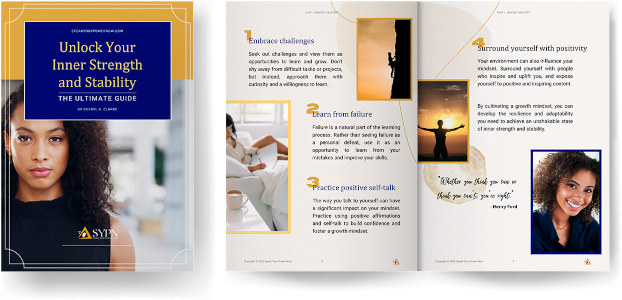Introduction: Feeling Stuck—Unraveling the Paralysis
In the journey of life, there are moments when we find ourselves in a state of stagnation, where progress seems elusive, and our aspirations are trapped behind an invisible barrier. The sensation of being stuck can be frustrating and demotivating, casting a shadow over our ambitions and dreams. But fear not, for within the labyrinth of this perplexing predicament lie answers and strategies that can liberate us from the clutches of inertia. In this exploration, we delve into the common causes of feeling stuck in life and illuminate the pathways that lead to overcoming this immobilizing state.
The Complexity of Being Stuck
Universal Dilemma: Stuck in a Rut. Picture this: You wake up each morning to a monotonous routine that feels like a never-ending loop. Your days blur into one another, and the vibrancy of life seems to have faded into the background. This is the universal dilemma of feeling stuck in a rut. It’s the emotional quicksand that drags us down, making it seem impossible to move forward. Whether it’s in our personal lives, careers, or relationships, this rut can suffocate our enthusiasm and dim our hopes.
The roots of this rut often lie in our comfort zones and fear of change. We become accustomed to the familiar, even if it’s not fulfilling, because it provides a sense of security. Venturing beyond that comfort zone can be intimidating, causing us to remain stagnant. The challenge here is breaking free from the chains of familiarity and embracing the uncertainty that accompanies progress.
When Progress Feels Out of Reach. Have you ever set goals that felt so distant they might as well be on another planet? The sensation of progress feeling out of reach can be daunting. It’s like chasing a mirage that keeps moving farther away, leaving us parched for achievement. This feeling can stem from various sources, including self-doubt, lack of direction, and external obstacles.
One key contributor to this sensation is a lack of clear direction. When our goals are nebulous or undefined, we’re essentially navigating without a compass. Additionally, external obstacles like financial constraints or societal expectations can create an atmosphere of entrapment, making progress appear like an insurmountable summit. It’s crucial to understand that while these barriers are real, they’re not insurmountable. The journey might be challenging, but with the right strategies, progress is attainable.
As we venture deeper into the intricacies of feeling stuck, we’ll uncover the psychological underpinnings that contribute to this state of inertia. Join us as we dissect the fear of failure, the lack of clarity, and the overwhelm that often keeps us glued to a stationary existence. And fear not, for on the horizon, we’ll discover potent strategies to break free from these binds and embrace the journey of growth and transformation.
Underlying Triggers
Feeling stuck is like finding ourselves in a maze, where the walls are constructed not of bricks, but of intricate psychological barriers that keep us confined. The power of these barriers is astounding, as they hold the potential to paralyze even the most motivated individuals. Understanding these barriers and identifying the root causes of stagnation is the key to dismantling them and embarking on a journey of growth.
The Power of Psychological Barriers. Within the realm of our minds lie an array of psychological barriers that can shackle our progress. These barriers often arise from past experiences, self-doubt, and the subconscious fear of the unknown. The fear of failure, the dread of making mistakes, and the anxiety of stepping out of our comfort zone can create a formidable blockade. Our minds can become fortresses of apprehension, trapping us in a loop of self-imposed limitations.
Identifying the Root Causes of Stagnation. To conquer any challenge, we must first understand its origin. Identifying the root causes of stagnation is a pivotal step towards breaking free from its grip. One of the most potent culprits is the fear of failure.
Fear of Failure—A Paralyzing Force
Fear-Driven Standstill. Fear has an uncanny ability to hold us back. Fear of failure, in particular, can be paralyzing. We often imagine the worst-case scenarios, envisioning ourselves stumbling and faltering in the pursuit of our goals. This fear can prevent us from taking any action at all, trapping us in a standstill. But here’s the truth: failure is not the end, but a stepping stone towards success.
Rewriting the Narrative: Embracing Failure as Learning. What if we could rewrite the narrative of failure? What if we saw failure not as an obstacle, but as a teacher? Embracing failure as a source of learning and growth can help us overcome the fear that holds us back. Each setback becomes an opportunity to refine our approach, to gather insights, and to inch closer to success. By reframing our relationship with failure, we can transform it from a paralyzing force into a catalyst for progress.
Lack of Clarity—Navigating the Fog
The Confusion Quandary. Imagine setting out on a journey without a map or a destination. That’s the sensation of being stuck due to a lack of clarity. The confusion quandary can arise when we don’t have a clear vision of our goals or when our aspirations are clouded by doubt and uncertainty. It’s like navigating through a dense fog, where every step forward feels uncertain.
Crafting a Clear Vision: Defining Your Goals. Clarity is the compass that guides us out of the maze of stagnation. Defining clear, actionable goals provides us with a roadmap to follow. It transforms the fog of uncertainty into a clear path to progress. By setting specific and achievable goals, we create a sense of purpose and direction that propels us forward.
Overwhelm—Taming the Information Beast
Drowning in Choices. In a world brimming with possibilities, the paradox of choice can be overwhelming. The more options we have, the harder it becomes to make decisions. The sensation of drowning in choices can lead to analysis paralysis, where we become immobilized by the sheer volume of information and possibilities. This overwhelm can keep us stuck, unable to move in any direction.
Streamlining Choices: Focus on What Matters. To overcome overwhelm, we must learn the art of streamlining choices. Instead of spreading ourselves thin by pursuing multiple paths, we must focus on what truly matters. By prioritizing our goals and filtering out distractions, we can channel our energy into meaningful actions that lead us towards progress. It’s about quality over quantity, about taking deliberate steps instead of being swept away by the tide of options.
As we unravel the intricate triggers of feeling stuck, we’ll unveil the strategies that can dismantle these barriers and pave the way for personal and professional growth. Join us as we delve deeper into the transformative strategies that can help us break free from the grip of stagnation and embark on a journey of empowerment and achievement.
Breaking the Chains of Stagnation
In the depths of feeling stuck, it’s essential to realize that the chains of stagnation are not unbreakable. We hold within us the power to shatter the illusion of helplessness and forge an escape plan that leads us towards a brighter, more fulfilling future.
Shattering the Illusion of Helplessness. The first step in breaking free from the grip of stagnation is to shatter the illusion of helplessness. It’s easy to succumb to the belief that we’re powerless in the face of our circumstances. However, this belief is a mirage that obscures the potential for change. By acknowledging that we have agency over our actions and decisions, we can reclaim control over our lives.
Empowering Your Escape Plan. Crafting an escape plan requires both determination and strategy. One of the most potent strategies is setting attainable goals that serve as the catalyst for change.
Setting Attainable Goals: A Catalyst for Change
The Role of Achievable Milestones. Attainable goals act as the building blocks of progress. Instead of fixating on a distant endpoint, we focus on achievable milestones that mark our journey. These milestones create a sense of accomplishment and motivate us to keep moving forward.
Constructing Your Roadmap to Success. A roadmap to success is constructed by setting clear, specific goals and charting the steps required to achieve them. This roadmap serves as a guide, helping us navigate the twists and turns on the path to progress. With each goal achieved, we inch closer to the transformation we seek.
Taking Action—The Antidote to Inertia
The Momentum-Building Approach. To overcome inertia, we must take action. The momentum-building approach emphasizes starting with small, manageable actions. Each action builds momentum, creating a sense of accomplishment and propelling us forward. This approach transforms the overwhelming task of change into a series of achievable steps.
Embracing Imperfection: Progress Over Perfection. Perfectionism can be a paralyzing force, keeping us stuck in the pursuit of flawlessness. Embracing imperfection allows us to focus on progress rather than perfection. It frees us from the fear of failure and encourages us to learn from our mistakes. In this way, imperfection becomes a stepping stone towards growth.
Seeking Support—The Power of Connection
Overcoming Isolation. Isolation is a common side effect of feeling stuck. Breaking free from this isolation involves seeking support from others who can offer guidance, empathy, and perspective.
Allies on the Journey: Leverage Mentors and Peers. Mentors and peers can be invaluable allies on our journey. Mentors offer insights based on their experiences, guiding us through challenges and providing wisdom. Peers provide a sense of camaraderie, reminding us that we’re not alone in our struggles. Through connection, we find encouragement and motivation.
Unleashing the Full Potential
From Stagnation to Transformation. By applying the strategies outlined above, we can shift from a state of stagnation to one of transformation. The barriers that once held us captive begin to crumble, revealing the path to growth and empowerment.
Path Forward: Embracing Growth. Embracing growth is not a linear journey but a continuous process. With each challenge we overcome, we become more resilient and adaptable. We cultivate a growth mindset that propels us forward, ready to face new obstacles and achieve new heights.
Conclusion—Unlocking Your Forward Momentum
Being stuck is not a permanent state, but a crossroad that offers us the choice to remain stagnant or to embark on a journey of transformation. By shattering the chain of stagnation, setting attainable goals, taking action, and seeking support, we unlock our forward momentum. As we journey toward growth, we discover the true extent of our potential and the boundless possibilities that await us.












